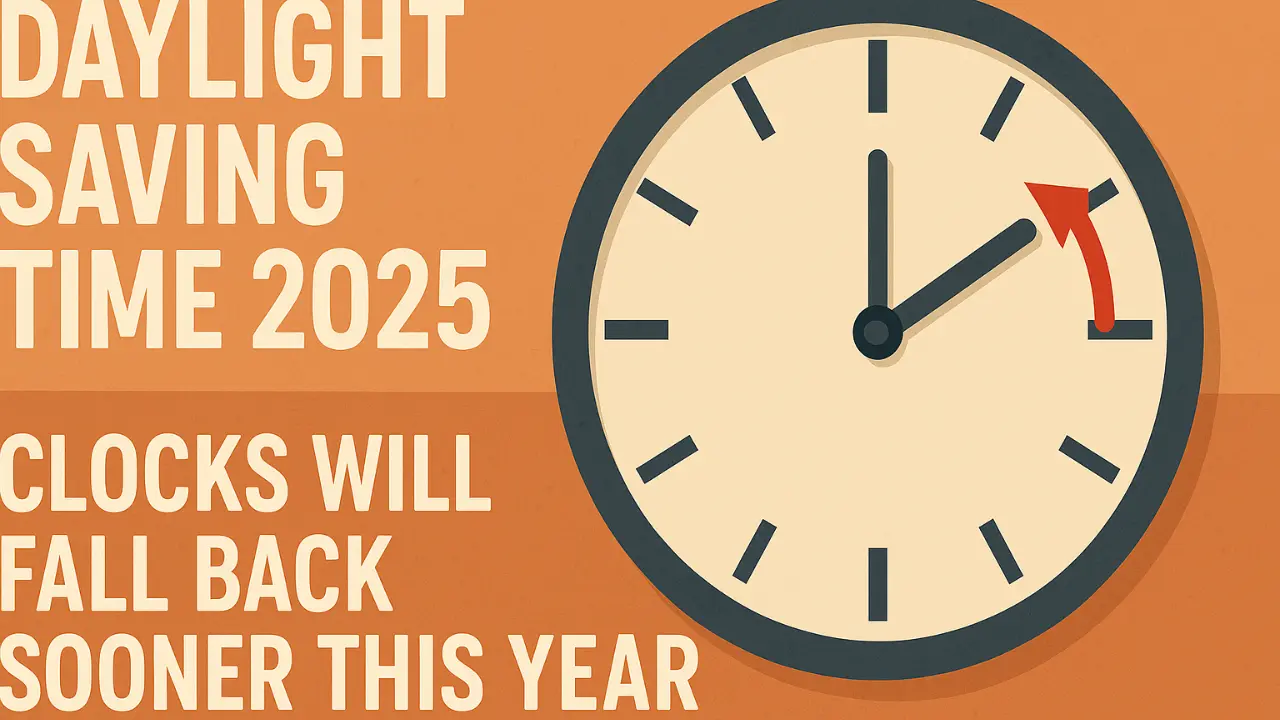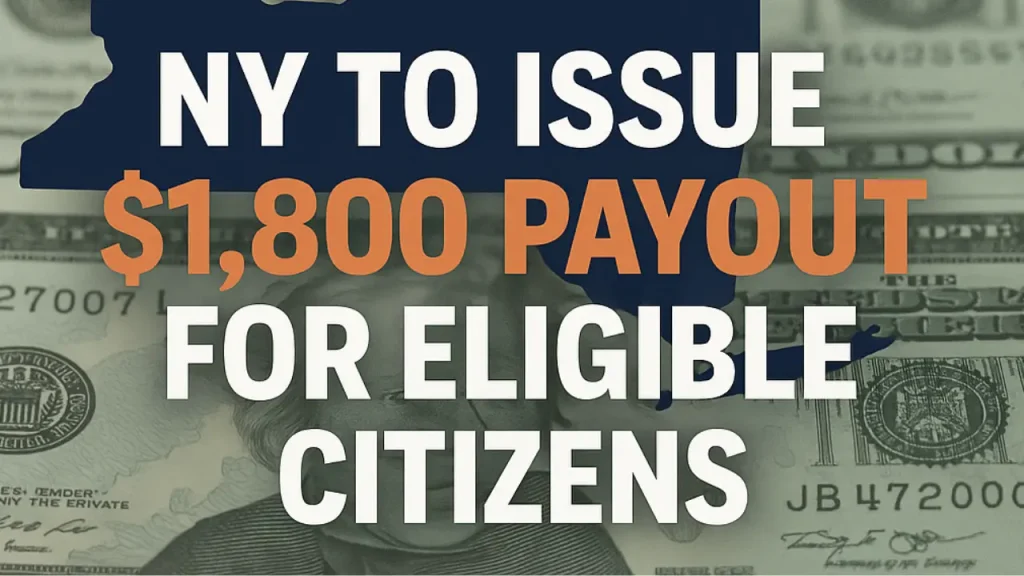As autumn deepens and daylight shortens, millions of Americans and Canadians are preparing for the familiar ritual of adjusting their clocks. Daylight Saving Time (DST) 2025 will officially end on Sunday, November 2, 2025, at 2:00 a.m., when clocks will “fall back” by one hour to mark the return to Standard Time.
This year’s shift is drawing attention because the transition arrives sooner within the calendar compared to recent years, aligning with a period of shorter daylight hours and cooler weather. The change affects more than just sleep schedules—it influences everything from energy consumption and mental health to road safety and business operations.
When the Change Happens
In 2025, Daylight Saving Time begins and ends on the following dates:
| Event | Date | Time of Change | Effect |
|---|---|---|---|
| DST begins (Spring Forward) | Sunday, March 9 | 2:00 a.m. → 3:00 a.m. | Lose one hour of sleep |
| DST ends (Fall Back) | Sunday, November 2 | 2:00 a.m. → 1:00 a.m. | Gain one hour of sleep |
For most people, this means setting clocks back one hour before going to bed on Saturday night, November 1. Smartphones and digital devices usually adjust automatically, but analog clocks, ovens, and car dashboards may need manual updates.
This adjustment signals the return to shorter, darker evenings but slightly brighter mornings. It also marks the symbolic start of the winter season in many regions.
Why We Have Daylight Saving Time
Daylight Saving Time was first introduced during World War I as a measure to conserve energy by making better use of natural daylight. The idea was simple: shift an hour of daylight from the morning to the evening when people are more active.
The United States formally adopted the system in 1918, and after several adjustments, the modern DST schedule was established by the Energy Policy Act of 2005. Since 2007, DST has begun on the second Sunday in March and ended on the first Sunday in November.
The rationale behind DST includes:
-
Extending daylight hours for recreation and commerce.
-
Reducing energy consumption during evening hours.
-
Enhancing public safety by having more daylight during active times of day.
While originally justified as an energy-saving measure, recent studies suggest that its actual impact on energy consumption is minimal due to modern lighting and HVAC systems. However, proponents argue that the extra daylight boosts consumer spending, outdoor activity, and social engagement.
Regions and Exceptions
United States and Canada
Most of the U.S. and Canada observe DST, but there are notable exceptions:
-
Hawaii and most of Arizona do not observe DST.
-
The Navajo Nation, which spans parts of Arizona, New Mexico, and Utah, does observe DST.
-
U.S. territories such as Puerto Rico, Guam, American Samoa, and the U.S. Virgin Islands remain on Standard Time year-round.
Europe
European countries follow a similar time adjustment but end DST one week earlier than North America. In 2025, European nations will turn clocks back on October 26, 2025.
Other Regions
Globally, only about 70 countries observe Daylight Saving Time, while more than 170 countries do not. Many nations near the equator have consistent daylight year-round and see little need for such adjustments.
| Region | DST Observed | Notes |
|---|---|---|
| United States & Canada | Yes | Begins March, ends November |
| Europe | Yes | Ends October 26, 2025 |
| Asia | Rarely | Most countries do not observe |
| Africa | Minimal | Only a few North African nations participate |
| South America | Limited | Some southern countries use seasonal changes |
| Australia & NZ | Partial | Only some states observe DST |
Why It’s Happening Sooner in 2025
The phrase “sooner this year” refers to how the transition aligns earlier within the autumn season. In 2025, November begins on a Saturday, so the “first Sunday in November” — the official end of DST — falls immediately afterward, on November 2.
This earlier date means the time change will occur before many regions fully enter winter’s short daylight cycle, catching some by surprise. As a result, evening darkness will arrive earlier than expected in the first week of November, impacting routines and outdoor activities.
Effects of the Time Change
Sleep and Health
The end of Daylight Saving Time brings an extra hour of sleep, which many people welcome. However, the body’s internal clock can still take several days to adjust to the new light cycle. Some individuals experience:
-
Difficulty falling asleep or waking up earlier than usual.
-
Mood changes or mild depression due to reduced daylight exposure.
-
Fatigue during early evenings.
Medical research suggests that the sudden change in light exposure affects the body’s circadian rhythm. People who are sensitive to time changes—such as shift workers or those with sleep disorders—may feel its impact more strongly.
Mental Health
As daylight diminishes, seasonal affective disorder (SAD) becomes more common. The earlier sunsets can contribute to feelings of sluggishness, irritability, or sadness. Experts often recommend exposure to morning sunlight, regular exercise, and maintaining consistent sleep schedules to combat these effects.
Productivity and Daily Routines
Employees and students may notice temporary dips in productivity during the first week after the transition. Adjusting meal times, commuting schedules, and energy levels to match the new daylight pattern can take time.
Energy Use
Although DST was designed to save electricity by reducing evening lighting needs, its effectiveness in modern society is debated. With widespread use of air conditioning and electronic devices, overall energy savings are now marginal. However, the later sunset during DST months is still seen as beneficial for evening activities and local economies.
Safety and Transportation
The shift from DST to Standard Time affects road and pedestrian safety. Studies show that accident rates can increase immediately following the change, especially during darker evenings.
Some key findings include:
-
Increased pedestrian risk in early evening hours.
-
Reduced visibility during commutes.
-
Higher likelihood of fatigue-related accidents.
To stay safe, drivers are encouraged to adjust headlight settings, remain alert during commutes, and plan travel earlier in the day if possible.
The Ongoing Debate: Keep It or End It?
The twice-yearly time change has sparked widespread debate across the U.S. and abroad. Critics argue that the practice is outdated, while supporters insist it remains beneficial.
Arguments for Permanent Daylight Saving Time
-
More daylight in the evening encourages outdoor activities and spending.
-
Retail and leisure industries benefit from extended daylight hours.
-
Evening light improves mood and reduces crime rates.
Arguments for Permanent Standard Time
-
Better alignment with natural circadian rhythms.
-
Health experts note improved sleep quality and morning alertness.
-
Reduced confusion and disruption caused by annual clock changes.
Several U.S. states have passed legislation to adopt permanent Daylight Saving Time, but such changes require federal approval. The proposed Sunshine Protection Act aims to make DST permanent nationwide, but it has yet to become law.
Until new legislation is enacted, the twice-yearly switch will continue in 2025 and beyond.
Preparing for the Change
As November 2 approaches, here are some tips to make the transition smoother:
-
Adjust Gradually: Begin going to bed 15–30 minutes earlier a few nights before the time change.
-
Check Devices: Verify that clocks, alarms, appliances, and vehicles are correctly updated.
-
Use the Extra Hour Wisely: Take advantage of the extra morning daylight to exercise or enjoy natural sunlight.
-
Improve Lighting at Home: As evenings grow darker, ensure adequate indoor lighting to maintain energy levels and reduce eyestrain.
-
Stay Consistent: Keep meal times and sleep routines steady to help your body adapt quickly.
-
Review Safety Plans: Ensure outdoor lighting and visibility gear are ready for darker commutes.
Economic and Social Implications
The annual time change influences more than personal schedules—it affects the broader economy and society.
-
Retail and Hospitality: Extended daylight hours during DST months encourage consumer spending and outdoor dining. After the fall back, indoor entertainment venues typically see an uptick.
-
Energy and Utilities: While electricity use for lighting decreases during DST, heating and cooling demands can offset savings.
-
Public Safety: Law enforcement agencies note seasonal shifts in accident and crime patterns around the time changes.
-
Technology and Transport: Airlines, railways, and tech companies often adjust timetables and server clocks in advance to prevent errors.
Global Perspective
The world remains divided on Daylight Saving Time. Nations such as Japan, India, and China do not observe it, citing consistent daylight throughout the year. In contrast, parts of Australia, Europe, and the Americas maintain seasonal changes, reflecting historical and geographic preferences.
| Continent | Countries Using DST | Trend |
|---|---|---|
| North America | USA, Canada, Mexico (partial) | Stable practice |
| Europe | Most EU nations | Debate on ending DST |
| South America | Chile, Paraguay, Uruguay | Limited use |
| Oceania | Australia (partial), New Zealand | Ongoing |
| Asia | Few (Israel, Lebanon, Iran) | Declining |
| Africa | Minimal participation | Mostly abolished |
Looking Ahead
Daylight Saving Time has become a cultural marker as much as a practical adjustment. While debates continue over its relevance, its impact on daily life remains undeniable.
In 2025, the earlier end to DST means the shift to darker evenings will arrive swiftly, encouraging people to prepare ahead—both physically and mentally—for the seasonal transition.
Whether future years see permanent daylight or a return to a simpler, year-round standard time remains to be seen. For now, the ritual continues, a reminder that our relationship with time, daylight, and productivity is ever-evolving.
Conclusion
Daylight Saving Time 2025 marks another cycle in humanity’s ongoing attempt to balance nature’s rhythm with modern life. When the clock strikes 2:00 a.m. on Sunday, November 2, remember to set it back an hour and embrace that extra bit of morning light.
Though the adjustment may bring challenges—from sleep disruptions to early darkness—it also offers a valuable pause, signaling the season’s shift and the year’s winding down.
So as the clocks fall back sooner this year, take the opportunity to slow down, rest, and reset—because even in our fast-paced world, time still turns with the seasons.












Leave a Comment